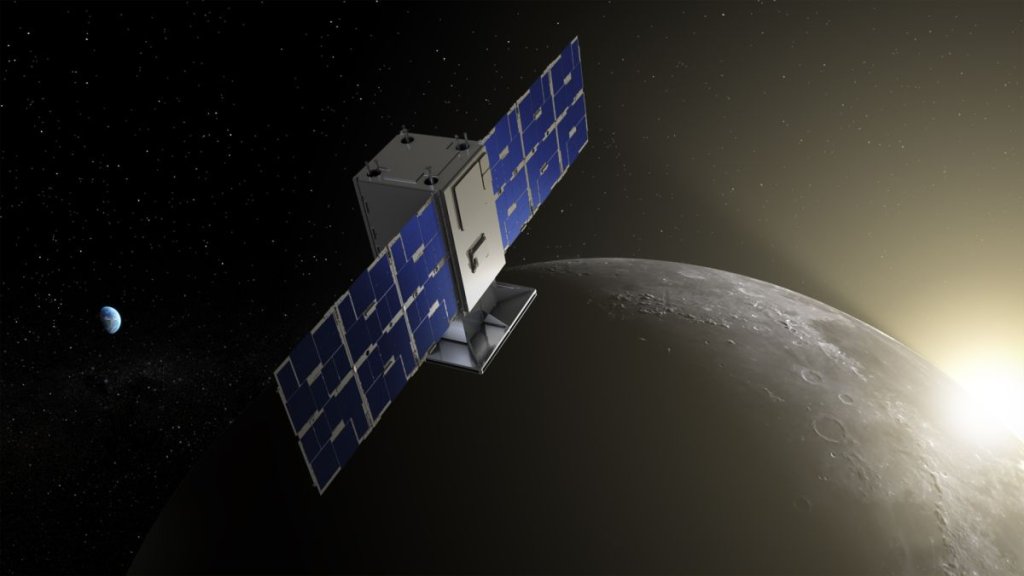NASA engineers had a nearly two-week battle with a space probe refusing to respond to commands.
CAPSTONE, an experimental spacecraft at the moon meant to test an orbit for NASA’s planned Gateway space station, did not listen to communications from Earth for 11 days, the agency said in a blog post (opens in new tab) Wednesday (Feb. 8).
“The spacecraft remained overall healthy and on-course throughout the issue, sending telemetry data back to Earth,” the agency said of CAPSTONE’s issue, which began on Jan. 26. The spacecraft rebooted itself on Monday (Feb. 6), however, restoring its ability to listen to commands from home.
That’s not the first time CAPSTONE (short for “Cislunar Autonomous Positioning System Technology Operations and Navigation Experiment”) encountered drama on its mission, showing how challenging it is to run a cubesat-sized mission in deep space near the moon.
Related: These two tiny spacecraft will help pave the way for astronauts to return to the moon
CAPSTONE launched just fine atop a Rocket Lab Electron booster on June 28, 2022, on behalf of NASA with spacecraft operators at Advanced Space and Terran Orbital. The team lost contact with the probe on July 4 during a stage separation maneuver, however.
Sorting that issue only took a day, but another glitch occurred two months later during an engine burn to correct the spacecraft’s trajectory. That problem briefly forced the spacecraft into a protective safe mode as a result.
Once engineers found the valve causing this issue, they managed to get the probe back on track to be the first-ever cubesat at the moon on Nov. 13, 2022. Since then, NASA officials reported on Wednesday, CAPSTONE has finished more than 12 near-rectilinear halo orbits as a pathfinder for Gateway. That’s double the original manifest of six.
The orbit allows for a close approach to the potentially water-rich moon’s south pole, making landings easier for the Artemis program that may put astronauts there as soon as 2025 with Artemis 3. It is fortuitous that CAPSTONE reached its orbit, as another small NASA spacecraft called Lunar Flashlight had to abandon that task this week following several propulsion issues en route.
As a technology demonstration mission, CAPSTONE is expected to run into trouble every once in a while. Other, smaller glitches have occurred with the spacecraft during its lunar sojourn — but the mission remains on track for now.
CAPSTONE was supposed to perform a navigation test, developed by Advanced Space, to use data between at least two spacecraft for firming up a satellite’s location where GPS is not available.
The long-running NASA Lunar Reconnaissance Orbiter was ready for the test and received the signal, but CAPSTONE was unable to get the “crosslink ranging measurements” it needed from the returned signal, NASA officials said. More tests are planned for this navigation system in the coming weeks.
As a positive, however, CAPSTONE has required far fewer maneuvers in orbit to stay on track than what the mission called for. At first, NASA expected the team would need one “orbit maintenance” firing each time the spacecraft circled the moon. But in 12 orbits around the moon, CAPSTONE only needed to fire its engine twice.
“This reduces risk and complexity for the mission and informs plans for future spacecraft flying in this orbit, like Gateway,” NASA officials wrote.
Elizabeth Howell is the co-author of “Why Am I Taller (opens in new tab)?” (ECW Press, 2022; with Canadian astronaut Dave Williams), a book about space medicine. Follow her on Twitter @howellspace (opens in new tab). Follow us on Twitter @Spacedotcom (opens in new tab) or Facebook (opens in new tab).

